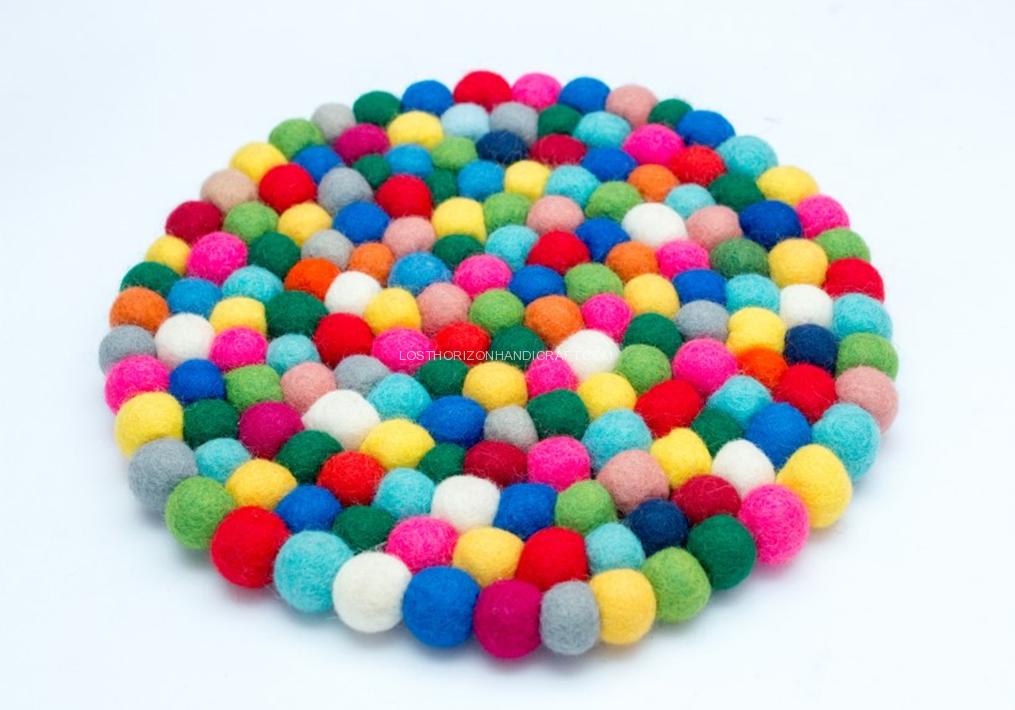If you own any felt products, you must wonder how they are made. Some of the most common questions we get asked are, what is organic felt, and how does it get transformed into beautiful and inventive handicrafts!
Felt has a fascinating history and a unique manufacturing process. This blog will highlight all the basics you need to know about organic felt. Read on to learn more!
What is organic felt?
Felt is a non-woven fabric that is created by matting fibers together. Many other methods, including needling, compressing, rubbing, rolling, and beating, are used to complete the matting process. Finally, the fibers are supposed to become entangled and solidify into a piece of cloth.
Making felt is a very old craft used in Asia and Europe. For the nomadic populations in Asia, felt was crucial. It was used for housing, heating, and other purposes.
What is organic felt made from?
Historically, wool and other organic materials have been used to make felt. This gives it a smooth appearance that has come to be associated with felt. Wool can mat together quite quickly, which is one of the reasons it is employed. This would typically be a fault, but the felt-producing sector has embraced the inherent qualities of this material and turned it into a great asset.
Back then, sheep’s wool was spread out on a rug until it reached the desired thickness before being hammered. The wool was then rolled back and forth on the rug using the wearer’s feet to finish matting the rug. Various materials, including wool and synthetic fibers like polyester and acrylic threads, are used to create felt today, including machines that complete the matting process.
How is organic felt made?
Traditional felt is labor-intensive to create from scratch. The raw materials must first be gathered from sheep or other animals with fuzzy coats. For most uses, combing and carding come next after the wool has been gathered. The fibers pass through a sizable combing cylinder with teeth made of big steel nails. Then, it is put into a device that separates the fibers into loose fibers using tiny teeth. The process of making rolls follows this, and batts are produced using a machine known as a cross-lapper.
The next step involves exposing the batts to heat and moisture, which causes them to condense and shrink. Large rollers are then used to apply pressure, producing the final smooth cloth we use for sewing and crafting items.
What kind of felt do we use at Lost Horizon Handicraft?
Those who enjoy unique felt handicrafts find it challenging to choose the best and most creative manufacturer. Therefore, Nepal is among the high-ranking nations when looking for the top suppliers and manufacturers of handicrafts.
Our company is among Nepal’s top few that utilize 100% natural organic New Zealand-based sheep wool. Wool felt is excellent for fuzzy handicrafts because it is incredibly soft and strong. However, the felt is susceptible to shrinkage and should be hand cleaned in lukewarm water. Additionally, 100% wool felt has the following qualities:
- Wool felt has a built-in resistance to fire.
- It resists mildewing due to its antibacterial qualities.
- It is an ecologically friendly option because it is a natural and renewable resource.
- It may be manipulated with and sculpted because of its little elasticity.
- It is 100 percent natural and is water and stain-resistant.
- The felt won’t ball up or pill.
- It is more durable to wear because it is thicker, more closely woven, and has stronger fibers.
To conclude?
For centuries, organic felt handicrafts have immortalized cultures and traditions worldwide. However, it is remarkable how the same weaving techniques are utilized today to create modern felt articles. To check out our collection, head to our website to browse our unique products!





